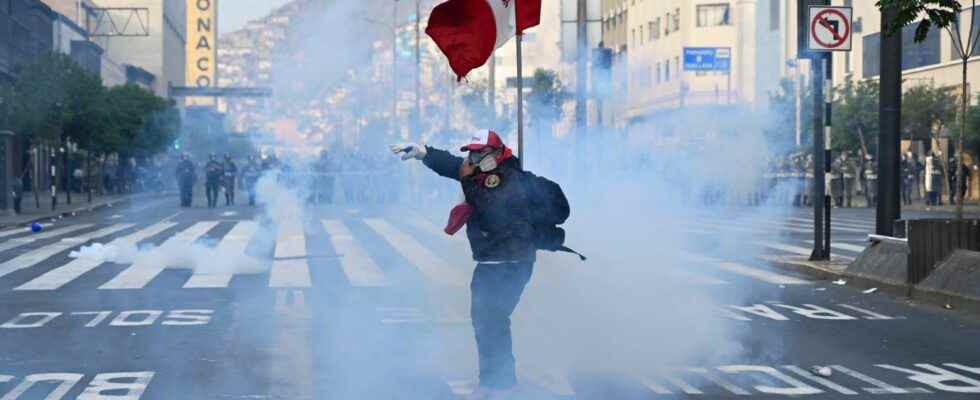The political crisis continues and worsens in Peru. Seven people were killed Thursday, December 15 in Ayacucho, in the south of the country, during clashes between soldiers and supporters of deposed President Pablo Castillo, according to regional health authorities. These clashes took place “in various points of the city”, according to the Regional Health Directorate. A clash near Ayacucho airport notably left two dead, detailed the Peruvian People’s Defender (Ombudsman).
Facts
The movement entered, this Friday, December 16, its 9th day of protest after the continued imprisonment of the deposed former head of state Pedro Castillo. The Supreme Court decided Thursday to leave the ex-president of the radical left in detention for 18 months. The latter has been imprisoned since his dismissal on December 7, following a failed attempt to dissolve Parliament, described as a failed putsch by his opponents. The prosecution, recalling that Pedro Castillo had tried to take refuge in the Mexican embassy after his dismissal, demanded that he be kept in detention until June 2024, citing a “risk of flight”. Prosecuted for “rebellion” and “conspiracy”, the ex-president faces ten years in prison, according to prosecutor Alcides Diaz.
The situation escalated on December 7, when Pedro Castillo, 53, ordered the dissolution of parliament, shortly before it debated an impeachment procedure against him, the third since he came to power in July. 2021. He announces an “exceptional government”, when Vice-President Dina Boluarte and other personalities denounce “a coup d’etat”. Washington demands that Pedro Castillo reconsider his decision. For its part, the Peruvian army, formerly involved in coups or having supported authoritarian regimes, does not flinch.
Ignoring the president, Parliament votes, a few hours later by a large majority, for his dismissal for “moral incapacity”. Dina Boluarte, from the same Marxist-inspired party (Free Peru) as Pedro Castillo, is invested as head of the country; Pedro Castillo is arrested by his own bodyguard. An investigation for “rebellion” and “conspiracy” is opened against him, in addition to six other investigations (for corruption and influence peddling). Justice imposes seven days of provisional detention on Pedro Castillo, who makes an official request for asylum in Mexico. This decision triggers numerous demonstrations by supporters of the ex-president, in Lima and in other cities, in particular in the Andean regions which are largely favorable to this former teacher in rural areas.
On the night of Sunday December 11 to Monday December 12, Dina Boluarte, who had named her government two days earlier, declared a state of emergency in the provinces most affected by the demonstrations. But new dams block the 12 roads in several regions. Some 2,000 people interrupt the activities of the airport of Arequipa (south), the second city of the country. The leftist governments of Mexico, Argentina, Colombia and Bolivia support Pedro Castillo.
why it matters
In the streets, the mobilization against the new power and the Parliament does not weaken despite the state of emergency declared Wednesday, for 30 days, throughout Peru. This measure allows the army to participate in law enforcement operations. The most virulent demonstrations are taking place in the south of the country, where five airports remain closed (Andahuaylas, Arequipa, Puno, Cuzco and Ayacucho).
Agrarian unions as well as peasant and indigenous organizations, very present in the territory of Cusco, have announced an “indefinite strike” in several regions of Peru from Tuesday 13, demanding the closure of Congress, early elections and a new constitution , according to a statement from the Agrarian and Rural Front of Peru. In total, at least 15 people have been killed during protests since December 7. 340 people have also been injured since the start of the protests, according to the Defender of the People.
The context
Opponents of the Castillo camp say some of its support comes from Movadef, the political wing of Shining Path, the Maoist guerrillas that claimed thousands of lives in Peru in the 1980s and 1990s. order by force, but also to appease discontent by acceding to certain demands.
Dina Boluarte announced on Wednesday that she wanted to advance the electoral calendar again “to December 2023”. Just invested, and while she crystallizes some of the discontent on her person, she had already committed to advancing the elections from 2026 to April 2024. Without succeeding in calming the demonstrators.
